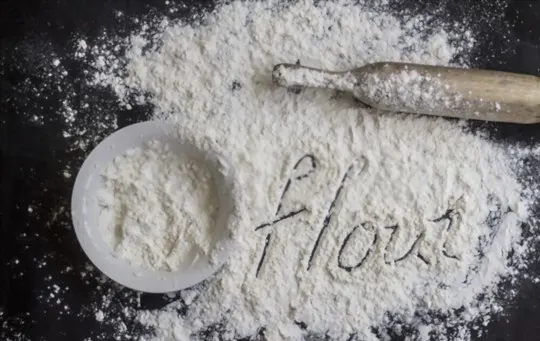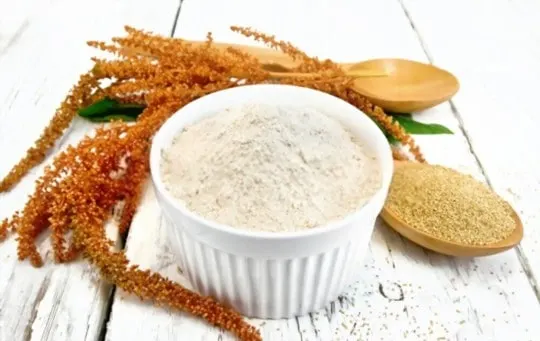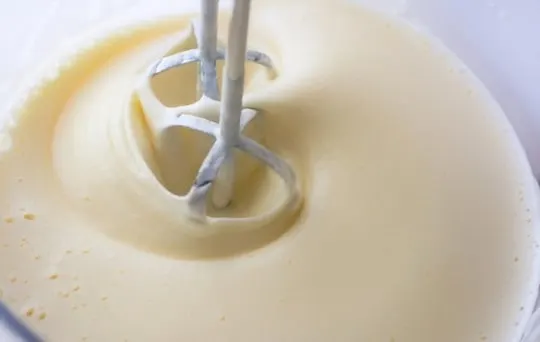Have you ever stumbled upon a recipe that calls for self-rising flour and wondered what it is?
Understanding this specific flour and how to substitute it can be challenging, but with the right knowledge, you can achieve perfect results.
Self-rising flour is a combination of all-purpose flour, baking powder and salt which makes it slightly more complex than regular all-purpose flour.
Fortunately, there are five substitutes for self-rising flour that will make your baking experience smoother.
Knowing how to use these substitutes in the proper measurements will help you achieve desired results with minimal effort.
What is Self-rising Flour?

Self-rising flour is a type of flour that includes baking powder as well as salt mixed in with the flour.
This mixture functions as a leavening agent and helps give baked goods rise and texture.
It’s most commonly used for light, soft and fluffy baked goods such as biscuits, quick breads, muffins, and more.
Self-rising flour can be found pre-packaged at most major grocery stores and is available in white or whole wheat varieties.
Alternatively, you can make your own by using 1 cup all-purpose flour (or white whole wheat or spelt), 1 ½ teaspoons baking powder, and ¼ teaspoon salt.
Furthermore, self-rising flour can even be gluten free.
Just make sure to use gluten free all purpose flour along with the specified amount of baking powder and salt to get excellent results.
When using self-rising flours there is usually no need to add extra leavening agents such as yeast or baking soda to recipes calling of self-rising flours since it already contains these components integrated within it.
However not all recipes will necessarily call precisely for self-rising flours; some may call for simply all purpose or cake flours instead depending on what kind of consistency the desired product should have once done baking them in the oven—be sure to read carefully which type of flour is asked for before you start.
The 5 BEST Substitutes for Self-rising Flour
If you find yourself in a position where you need to replace self-rising flour for a recipe, there are a few options that can serve as substitutes.
Here’s a detailed comparison of the 5 best substitutes for self-rising flour, along with their key characteristics and proper ratios:
| Substitute | Key Characteristics | Proper Ratio |
|---|---|---|
| All-purpose Flour, Baking Powder, and Salt | A combination of all-purpose flour, baking powder, and salt can mimic self-rising flour. It provides leavening and seasoning to baked goods. | 1 cup all-purpose flour + 1 1/2 teaspoons baking powder + 1/4 teaspoon salt per cup of self-rising flour |
| Whole Wheat Pastry Flour and Baking Soda | Whole wheat pastry flour combined with baking soda can be used as a healthier alternative to self-rising flour. | 1 cup whole wheat pastry flour + 1 1/2 teaspoons baking soda per cup of self-rising flour |
| Spelt Flour | Spelt flour is an ancient grain flour that can substitute for self-rising flour. It has a nutty flavor and works well in various recipes. | Use an equal amount of spelt flour as self-rising flour |
| Amaranth Flour | Amaranth flour is a gluten-free grain with a mild, nutty flavor. It can be used as a substitute for self-rising flour in gluten-free recipes. | Use an equal amount of amaranth flour as self-rising flour |
| Biscuit Mix | Biscuit mix is a pre-mixed combination of flour, leavening agents, and sometimes salt. It can be used as a convenient substitute for self-rising flour. | Use an equal amount of biscuit mix as self-rising flour |
Now let’s explore each substitute in more detail:
1 – All-purpose Flour, Baking Powder, and Salt

All-purpose flour, baking powder, and salt can be combined to form an effective self-rising flour substitute.
For every cup of all-purpose flour, you should use 1 ½ teaspoons of baking powder and ¼ teaspoon of salt.
If you’re looking for a gluten-free alternative, try substituting the all-purpose flour with gluten-free baking mix and doubling the amount of baking powder and salt used in the recipe.
Use this substitution in quick breads, pancakes, waffles and other recipes that call for self-rising flour.
2 – Whole Wheat Pastry Flour and Baking Soda

Whole wheat pastry flour is a great substitute for self-rising flour, especially when baking delicate items like cakes, cookies and quick breads.
When using whole wheat pastry flour, you must add baking powder and salt to the mix.
For every cup of whole wheat pastry flour used, you’ll need 1½ teaspoons of baking powder and ¼ teaspoon of salt.
The best part is that you can use this marriage of whole wheat pastry flour and leavening agents in any recipe that calls for self-rising or all-purpose white flour.
As with all baked goods, be sure to measure accurately.
3 – Spelt Flour

Spelt flour is an ancient grain that has been around since 5000 BC and was widely used in the Middle Ages, but it wasn’t until recently that modern bread recipes started using spelt flour as a self-rising substitute.
Spelt flour contains slightly fewer carbohydrates than traditional all-purpose or cake flour and is available in both white and whole wheat varieties.
It contains high levels of antioxidants, so it’s great for incorporating into healthy baking recipes.
However, it does not contain gluten, so it can’t be used for kneaded doughs or pastries.
To use spelt flour as a self-rising substitute, combine one cup of spelt flour with one teaspoon of baking powder plus ¼ teaspoon of salt to substitute for one cup of self-rising flour in your recipe.
It will still rise nicely and provide lots of nutrition.
4 – Amaranth Flour

Amaranth is a type of pseudocereal that is closely related to quinoa and does not contain gluten.
It has a higher fat content than other grains but its nutrients are highly digestible.
As such, it is an excellent choice as a substitute for self-rising flour.
When substituting amaranth flour for self-rising flour, use one cup of amaranth flour to replace one cup of self-rising flour and reduce the leavening agent in the recipe by 1 teaspoon per cup used.
As far as taste goes, this kind of flour provides a nutty flavor to the end product.
5 – Biscuit Mix

Biscuit mix is a ready-made combination of flour, baking soda and other ingredients such as lard or butter.
It is also sometimes referred to as baking mix or baking powder biscuit mix.
When combined with water, this type of flour produces light and fluffy biscuits quickly without having to measure out your ingredients.
Biscuit mix usually contains about ½ teaspoon of baking soda for every cup of self-rising flour in order to achieve the same desired result.
If you don’t have access to biscuit mix, adding in your own baking soda and other dry ingredients may work too, but you may find that biscuits don’t rise quite as high.
Conclusion
Self-rising flour is a common ingredient in Southern baking and comes pre-blended with salt and baking powder so that you won’t have to measure extra ingredients while concocting your favorite recipes.
While it is more difficult to find in grocery stores located outside of the South, any of the ingredients listed above can be used as substitutes for self-rising flour.
When substituting all-purpose or cake flour for self-rising, be sure to add a 1/2 teaspoon of salt per cup of flour along with the leavening agent (baking powder) to create a similar flavor and texture to that of self-rising flour.
For those who are avoiding gluten or dairy, there are suitable alternatives from rice flour, almond meal or cornstarch which can be used in place of self-rising flour as long as adequate amounts of leavening agents (salt and baking powder) are added.
Remember the ratio: 1 teaspoon each of baking powder and salt for every cup of your chosen alternative ingredient will guarantee a successful substitution.

The 5 BEST Substitutes for Self-rising Flour
Ingredients
- 1 – All-purpose Flour Baking Powder, and Salt
- 2 – Whole Wheat Pastry Flour and Baking Soda
- 3 – Spelt Flour
- 4 – Amaranth Flour
- 5 – Biscuit Mix
Instructions
- Choose your preferred substitute from the list of options.
- Organize all of your ingredients.
- Use the proper substitute to cook your recipes.
